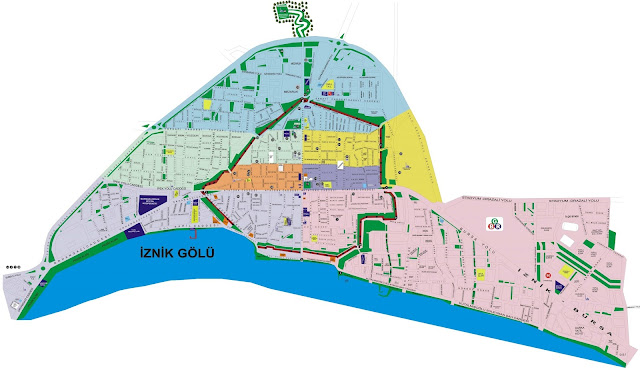 |
| Iznik |
Iznik, the ancient Nicaea, is located in the north-east of Bursa on the side of the Iznik Lake. İznik was founded in 316 BC under the name of Antigoneia by Antigonus and was later expanded by Lysimachus who named the city after his wife Nicea. Later the city was taken and ruled by the Bithynians, the Romans, the Goths and once again by the Romans. Under Constantine I when Christianity became state religion, Nicea then became an important religious center where, in 325 and 787, two ecumenical councils were held. The first one, under Constantine I, formulated the dogmatic statements of Christian orthodoxy (the Nicene Creed) and defined the role of the emperor both as head of the Church and head of the State. The second one was convoked by Irene and his son Emperor Constantin VI to rule on the use of saints images and icons, after the period of a strong movement called Iconoclasm .










